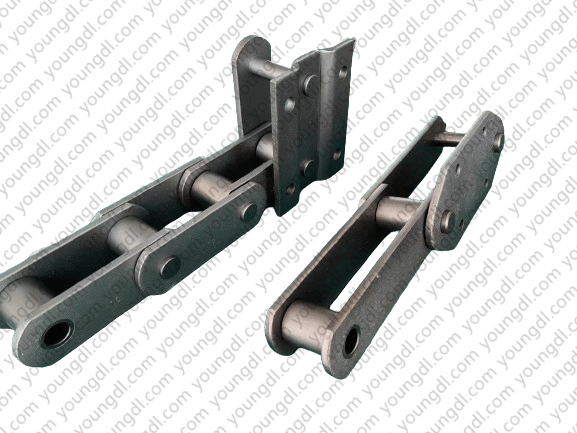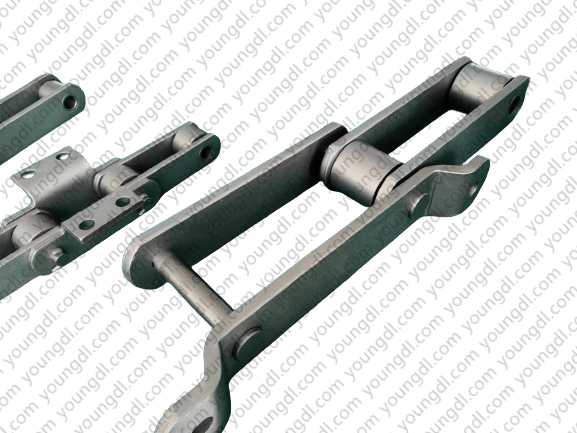Material Preparation: Select appropriate alloy steel materials and carry out the procurement and preparation of raw materials. Commonly used materials include 40Cr cold-drawn round steel or 40CrMo cold-drawn round steel for the pin, 20Cr or 40Cr cold-drawn steel pipe or 20CrMo cold-drawn steel pipe for the sleeve, hot-rolled flat steel 40Cr for the chain plate, 20Cr round steel or 40Cr steel pipe for the roller, 40Cr steel plate or Q235 steel plate for the wing plate, welding steel for the top plate, and 40Cr steel plate for the scraper.
Heat Treatment: Subject the raw materials to heat treatment processes such as quenching, tempering, and carburizing to enhance the material’s hardness and strength. Specific processes include “hot forging,” “hot riveting,” and “surface quenching.” After high-frequency processing, the surface becomes wear-resistant and the core exhibits strong toughness, greatly increasing the chain’s service life. Our carburizing process involves heating the material to carburizing temperature, then decomposing carbon atoms with liquid carburizing agents (methanol and kerosene) at high temperatures, leading to decomposition, adsorption, and diffusion. The carburized layer thickness generally reaches 0.8-1.2mm, adjustable based on customer needs. The surface hardness reaches 56-62 HRC, and the core hardness reaches 30-42 HRC. The pin is usually subjected to integral quenching of 40-45 HRC, followed by high-frequency surface induction hardening of 56-62 HRC, while the sleeve undergoes surface carburizing of 56-62 HRC. The wear-resistant plate is made of Q235, and the roller’s hardness ranges from 45-52 HRC, while the chain plate and wing plate exhibit hardness levels of 34-42 HRC.
Cold Heading: Use a cold heading machine to shape the heated materials. During the process, the chain’s formation and structure gradually emerge. This process is mainly used to produce chain pins, chain plate pins, chain wheel axles, and other components, significantly enhancing the material’s strength and hardness. Cold heading improves part accuracy and surface quality.
Cleaning and Polishing: Clean and shot peen the chain to ensure a smooth surface and reduce surface defects, thereby boosting the chain’s surface fatigue resistance.
Assembly: Assemble the various components of the chain, such as pins and sleeves.
Surface Treatment: Apply rust protection, lubrication, or surface coating to enhance the chain’s corrosion resistance. Options include galvanizing, nickel plating, and phosphating treatments.
Quality Inspection: Conduct quality inspection of finished chains, checking for compliance with size, weight, and strength requirements. Specific inspection equipment includes chain length measuring instruments, portable Rockwell hardness testers, magnetic particle detectors, Brinell hardness testers, portable high-precision roughness gauges, Rockwell hardness testers, and hydraulic universal testing machines (can be procured through agencies).
Packaging and Delivery: Pack chains that meet quality standards and prepare them for delivery. After oiling and greasing, typically use export wooden crates with attached labels.
I hope this helps! Let me know if you need further assistance.

